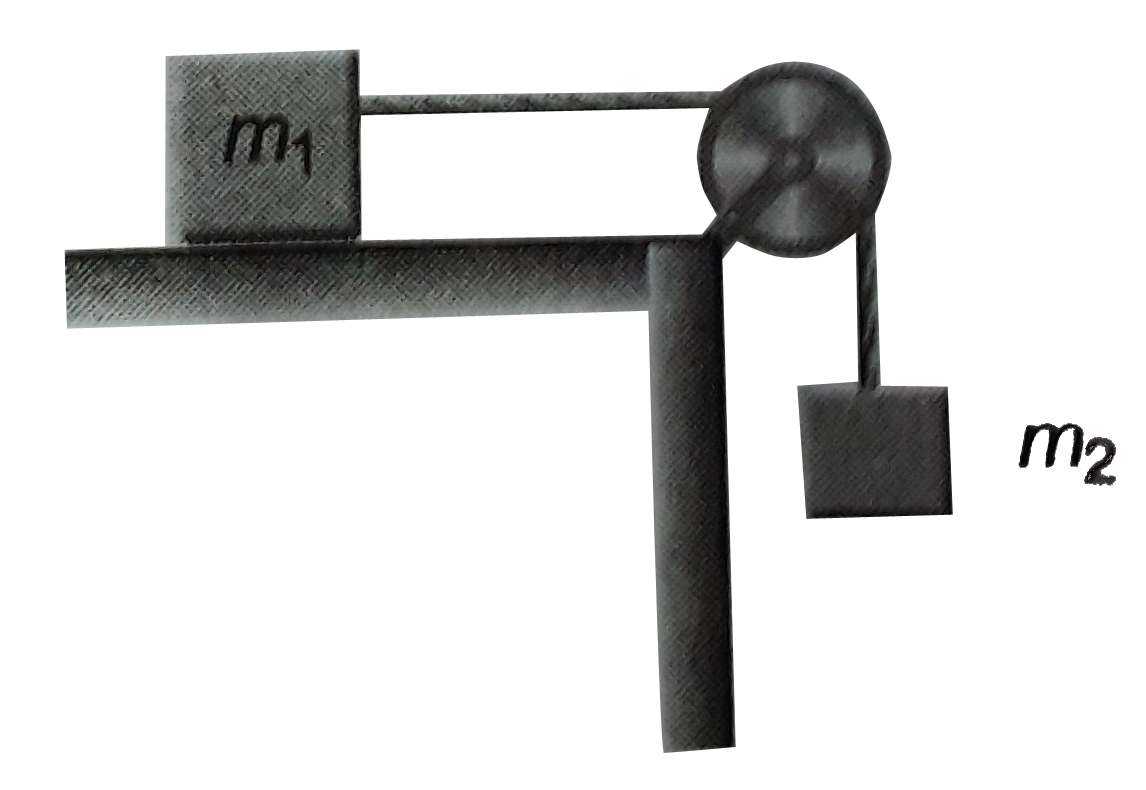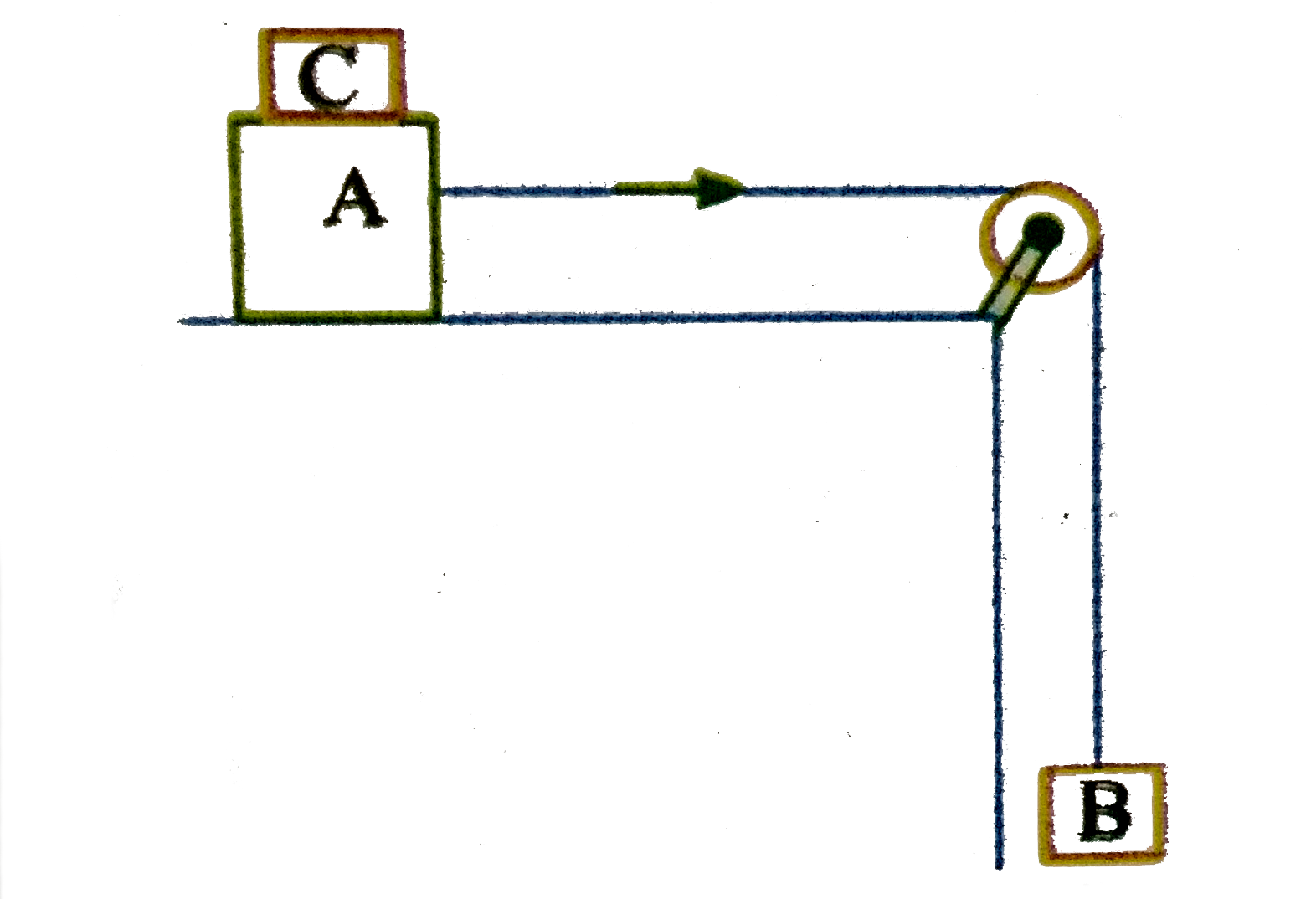Two blocks of mass m1=10kg and m2=5kg connected to each other by a massless inextensible string of length 0.3m are placed along a diameter of the turntable. The coefficient of friction between the table and m1 is 0.5 while there is no friction between m2 and the table. the table is rotating with an angular velocity of 10rad/s. about a vertical axis passing through its center O. the masses are placed along the diameter of the table on either side of the center O such that the mass m1 is at a distance of 0.124m from O. the masses are observed to be at a rest with respect to an observed on the tuntable (g=9.8m/s2).
(a) Calculate the friction on m1
(b) What should be the minimum angular speed of the turntable so that the masses will slip from this position?
(c ) How should the masses be placed with the string remaining taut so that there is no friction on m1.
0.2m
0.3m
0.4m
0.5m
The correct Answer is:A
For no frictional force on m1
m1r1ω2=m2r2ω2,r1=0.1m,r2=0.2
Topper's Solved these Questions
- CIRCULAR MOTIONBOOK - NARAYNACHAPTER - CIRCULAR MOTIONEXERCISE - LEVEL-VI
14 Videos
- CIRCULAR MOTIONBOOK - NARAYNACHAPTER - CIRCULAR MOTIONEXERCISE - LEVEL-VI PASSAGE
3 Videos
- CALORIMETRYBOOK - NARAYNACHAPTER - CALORIMETRYEXERCISE - Level- II (H.W)
11 Videos
- COLLISIONBOOK - NARAYNACHAPTER - COLLISIONEXERCISE - Level-II (H.W)
54 Videos
Similar Questions
Two blocks of mass m1=15 kg and m2=10kg connected to each other by a massless inextensible string of length 0.4 m are placed along a diameter of turn table rotating with an angular velocity of 15rads−1 about a vertical axis passing through its centre O. Mass m1 is at a distance of 0.225 from O. The coefficient of friction between the table and m1 is 0.6 while there is no friction between m2 and the table. The masses are observed to be at rest with respect to an observer on the turn table. Calculate the frictional force in newton on m1.
View SolutionIf coeffiecient of friction between the block of mass 2kg and table is 0.4 then out acceleration of the system and tension in the string. (g=10m/s2)

View Solution
Knowledge Check
Two moasses m1=5kgandm2=10kg, connected by an inextensible string over a frictionless pulley, are moving as shown in the figure. The coefficient of friction of horizontal surface is 0.15. The minimum weitght m that should be put on top of m2 to stop the motion is :-
 A27.3kgB43.3kgC10.3kgD18.3kg
A27.3kgB43.3kgC10.3kgD18.3kgA ring of radius 0.5 m and mass 10 kg is rotating about its diameter with angular velocity of 20 rad/s. Its KE is :-
A10JB100JC500JD250JA ring of radius 0.5 m and mass 10 kg is rotating about its diameter with angular velocity of 20 rad/s. Its KE is :-
A10JB100JC500JD250J
Two masses m1=10Kg and m2=5kg are connected by an ideal string as shown in the figure. The coefficient of friction between m1 and the surface is μ=0.2 Assuming that the system is released from rest calculate the velocity of blocks when m2hasdescendedby4m.(g=10 m//s^(2))
 .
.
View SolutionA block A of mass 3kg and another block B of mass 2kg are connected by a light inextensible string as shown in figure. If the coefficient of friction between the surface of the table and A is 0.5 What maximum mass C is to be placed on A so that the system is to be in equlibrium
 .
.
View SolutionTwo blocks of masses m1 and m2 are placed in contact with each other on a horizontal platform. The coefficient of friction between the platform and the two blocks is the same. The platform moves with an acceleration. The force of interaction between the blocks is :

View SolutionA block A of mass 3kg and another block B of mass 2 kg are connected by a light inextensible string as shown in figure. If the coefficient of friction between the surface of the table and A is 0.5. What maximum mass C is to be placed on A so that the system is to be in equilibrium ?

View SolutionA disc of mass 1 kg and radius 0.1 m is rotating with angular velocity 20 rad/s. What is angular velocity (in rad/s) if a mass of 0.5 kg is put on the circumference of the disc ?
View Solution
